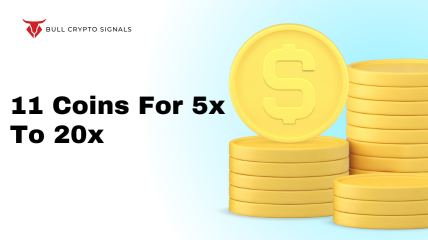How To Earn From Crypto Airdrops
What Is A Crypto Airdrop?
The practice of randomly distributing cryptocurrency tokens or coins to users' wallet addresses is known as an airdrop. People who are active in the blockchain community get small amounts of the latest digital currency sent to their wallets for free or in exchange for a small service, like retweeting a tweet sent by the company that released the currency. The objective of a crypto airdrop is to get the word out about a new coin or token.
Typically, blockchain-based firms may conduct promotional activities known as crypto airdrops to help in the launching of their cryptocurrency projects. Companies often announce airdrops on their official website, online platforms, and crypto discussion boards. Tokens or coins are only sent to wallets that are listed on a blockchain network, or that already have coins in them.
A recipient can be required to keep a certain amount of the cryptocurrency in their wallet in order to be eligible for the complimentary gift. On the other hand, they might have to do something like write a blog post, connect with a specific blockchain project member, or post about the coin on a social networking site.
How Crypto Airdrops work?
In crypto airdrops, a fixed amount of tokens or coins is released to participants. Everyone who wants to take part in the airdrop must meet the requirements set out by the project team. Some examples of this include taking part in community events, following specific accounts on social media, or trading a certain amount of the project's native coin.
When all the necessary conditions are satisfied, the project staff will distribute coins or tokens to the respective wallet addresses provided by the participants. Depending on the project, the distribution method can be either fully automated using smart contracts or completely human. Then, using their digital wallets, participants can manage and access the airdropped tokens.
Types Of Crypto Airdrop
There are different kinds of crypto airdrops, and each one has its own rules for who can participate.
Standard Airdrop
Most people think of this type of airdrop as a "standard" one, where you have to register or sign up in order to be eligible. It's also called a raffle airdrop. Because all you have to do to participate is stay up-to-date with the crypto world and sign up, this airdrop is almost free money.
Most projects use a random drawing to determine which wallets will receive tokens if demand is too high.
Holder Airdrop
Projects use this airdrop to show appreciation for community members who have shown themselves to be valuable by distributing tokens or coins to wallets that store their cryptocurrency. It is another common form of airdrop because the receiver is not obliged to do anything; in other words, it is passive. To see if you have received any new tokens, just check your wallet.
Take "Backpack NFT" by Crypto.com Expedition Gear as an example. For every "Crypto.com Land—The First Frontier" NFT that was owned, one mystery "Crypto.com Expedition Gear" parcel was airdropped.
Snapshot Airdrop
At the end of each block, or at a certain time, tokens are sent out to users who own the native cryptocurrency of that blockchain. Anyone whose wallets contain the native cryptocurrency at the moment of the snapshot can get the airdropped cryptocurrency. If you hold the cryptocurrency at the correct moment, you will be eligible for the airdrop, just like with the holder airdrop.
Participants in Crypto.com's 'All Star' NFT Airdrop were required to have their 'Loaded Lions' NFT inside their Crypto.com NFT accounts on a certain date in order to be eligible for the airdrop.
Bounty Airdrop
People have to do things like follow certain accounts on social media, join a specific group on Telegram, or refer their friends to the project in order to be eligible for these airdrops, which is why they're called task-based airdrops. Recipients must put in effort to qualify, but this aids projects in expanding their internet presence and engaging with the community.
Fork Airdrop
When a blockchain undergoes a fork, tokens in the new chain are distributed to holders of the original cryptocurrency, forming a fresh blockchain and cryptocurrency.
Fork airdrops can be seen in the ETHPoW case when customers who had ETH stored in a private wallet or on an exchange that supported a fork received ETHW, the forked version of ETH.
How Can You Participate In Crypto Airdrops
The process of taking part in an airdrop for cryptocurrency is simple. Here are the key procedures:
· To begin with, you must be aware of which programs are running airdrops. You can also get up-to-date cryptocurrency news by subscribing to project newsletters, joining important social media groups especially on X, Discord, and Telegram, and following relevant websites.
· After you've decided on the project you would like to work on, the next step is to make sure you qualify according to the team's requirements. To do this, you'll need to sign up using a referral link, complete tasks, or hold a certain quantity of the project's native currency.
· To receive the airdropped tokens, you need a cryptocurrency wallet compatible with them. Most projects will tell you to create a wallet and then tell you where to put your wallet address.
How Can You Earn From Crypto Airdrops?
People who are interested in cryptocurrencies and take part in crypto airdrops may be able to earn some money. Crypto airdrops offer a number of opportunities to make money, including:
· Sell the provided coins or tokens: The simplest approach to profit from crypto airdrops is to sell the provided tokens once they're available for purchase on a marketplace or exchange. The price of the tokens could go up or down over time as a result of supply and demand. So, it's important to study and research them first before you sell them.
· Holding: Another strategy to profit from crypto airdrops is to continue holding on to the free tokens until their value increases. The value and success of the project underlying the tokens will determine how much they may rise in price. This approach has more room for error and unpredictability, though, since the idea could bomb or become irrelevant in the market.
· Staking: Participants in certain cryptocurrency projects can earn incentives by locking their tokens within a smart contract or system for a longer amount of time. Additional tokens or other cryptocurrency can be used as a payment for staking rewards. Token holders can contribute to the project's growth and security through staking schemes, which also allow them to earn passive revenue.
· Referrals: Token holders who bring in new users to their platform or community may be eligible for referral bonuses from specific cryptocurrency projects. More tokens or any other cryptocurrency is the standard method of payment for referral bonuses. Token holders can increase their income and get more people to use their product by taking part in referral programs.
Things To Watch Out With Crypto Airdrops
Rules and Taxes
Airdrops are governed differently in different countries. Some countries consider them a kind of investment and tax them heavily. Some nations are more forgiving than others, seeing airdrops more as a marketing strategy than a means of financing. Before you file your taxes, find out if you are required to report airdrops in your area.
Scams
People pay lots of attention to airdrops because they are popular. It might be difficult to distinguish genuine programs from scammers when so many are offering airdrops. Before taking part in any airdrop, participants should be very careful and learn as much as they can about the programs.
The Loss Of Value
The possibility of token value dilution is another concern connected with crypto airdrops. An oversupply of tokens can happen when a project gives away a lot of them through an airdrop. This can cause the worth of tokens to drop.
All parties involved should think about the potential consequences of this risk and the project's future before committing to an airdrop. An honorable project will airdrop a fair amount of tokens in comparison to its token supply and will use them wisely.
Airdrop Farming
"Airdrop farming" means you're trying to get free tokens by engaging in as many airdrops as possible. There are dangers involved, despite how appealing it sounds.
First, airdrop farming may take time and effort away from other crypto tasks that could be more rewarding. Second, farmers who are always on the lookout for new airdrops may be tempted to rush through project reviews, ignoring the dangers associated with market fluctuations and unclear regulations.
Advantages And Disadvantages Of Crypto Airdrops
Advantages
• Rising project awareness through the marketing component of the airdrop
• Rewarding early adopters or anyone involved with the project who has a stake in it.
· Promotes the usage and acceptance of a freshly issued token and allows for the distribution of tokens among holders in a way that wouldn't have been possible in a free market
Disadvantages
• Connecting wallets to skeptical sites in order to claim airdrops could put security at risk.
• Some investors may be put off by the idea of participating in what might turn out to be "pump-and-dump" operations, and the token's lack of liquidity on exchanges could render it worthless.
Real World Examples
The cryptocurrency community has been captivated by remarkable airdrops throughout the years.
1. Airdrops were first discovered in 2014 when the Icelandic cryptocurrency Auroracoin (AUR), also called "Iceland's Bitcoin," was distributed to the public. Ever since, a plethora of cryptocurrency projects have incorporated the airdrop model into their protocols, giving tokens or coins to consumers.
2. The Stellar Development Foundation's Stellar Lumens (XLM) airdrop is another well-known example of an airdrop. To users of different cryptocurrency wallets and exchanges, Stellar distributed 2 billion XLM in 2019, which was worth about US$120 million at the time. The goal of this enormous airdrop was to promote Stellar as a low-cost, rapid payment system and get more people to use it.
3. On September 16, 2020, at an all-time high (ATH) price of $42.88 per token, Uniswap (UNI) distributed 6.43 billion tokens, the largest crypto airdrop to that point. The popularity of the crypto airdrop concept was rekindled during this DeFi Summer event.
4. ApeCoin (APE) organized the second-biggest crypto airdrop ever, giving away 3.54 billion APE on March 17, 2022, when the price was at its highest point, which was US$23.63. Before the airdrop, a "Bored Ape" Yacht Club NFT had a usual floor price of US$200,099, so the airdrop gave all Yuga Labs owners 10,950 tokens worth US$258,737. This was enough to buy one.
Conclusion
Distributing newly released tokens or coins to prospective users and buyers through airdrops is a novel and widely used practice in the cryptocurrency industry. Additionally, airdrops provide crypto fans with a chance to make money by reselling the tokens they receive.
With so many new cryptocurrency projects entering the market, an airdrop is one way to make a splash. A number of crypto airdrop-focused businesses provide startups with listing services, alerts to customers, and a variety of marketing tools to help them fine-tune their airdrops. As usual, this area has both good and bad businesses.
The fact that some crypto airdrops might reward users for being loyal to certain blockchain networks is another perk. Furthermore, tokens are distributed in a way that would not occur spontaneously in an open market when airdrops are sent to all wallets or existing token holders.
Crypto airdrops are great, but there are a few things to think about. The security of the network is a major issue, particularly with regard to the "redeeming" airdrops.
Sometimes, crypto airdrops aren't even real enterprises. Free money is always appealing, but some projects use it as an excuse to encourage stakeholders to acquire additional tokens in an airdrop, effectively boosting their share. The long-term goal might be to "rug pull" buyers by flooding the market with a lot of tokens all at once, which would crash the price and make airdrops from the past useless.
Finally, with no way to trade them on a public exchange, airdrops may be completely useless due to a lack of liquidity. In the early stages of a project, there may be airdrops that boast a value in the hundreds of dollars. The free tokens that were airdropped to wallet owners may not be worth anything if they can't be traded freely.










